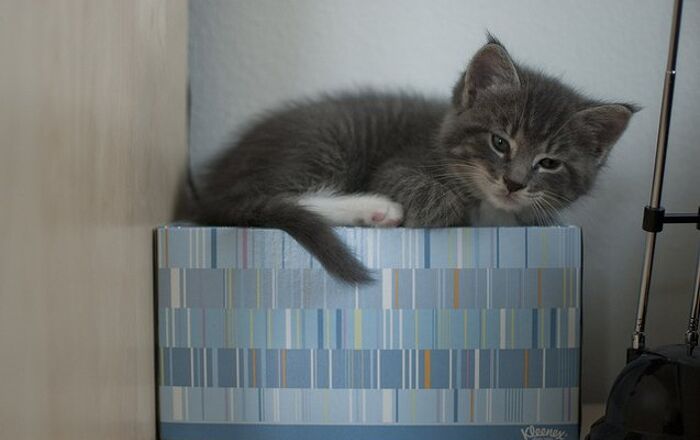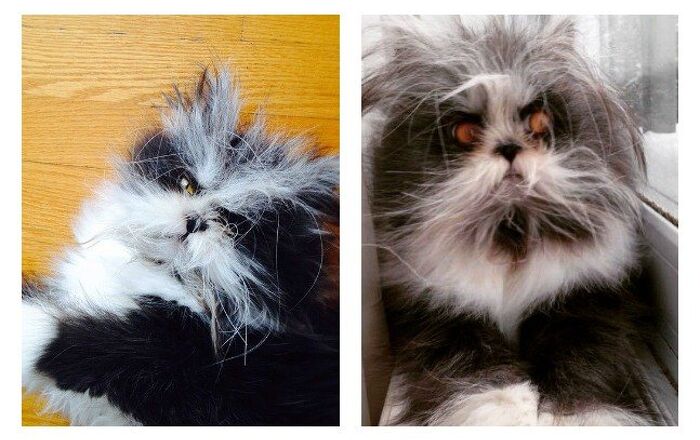
Ringworm can pass from animals to humans, and make both extremely ill. Take the necessary precautions to ensure it stays away from your cat.
If you’ve worked in pet rescue, you’re probably already pretty familiar with ringworm. But if you’re new to rescuing cats and kittens or you’re a pet owner who wants to be more informed about the various ailments that might impact a cat, you may not know a lot about ringworm. Well, we’re here to help, whether you’ve never heard of ringworm before or you want to know more about it.
Below is some information on what ringworm is, the symptoms that it can cause, and the treatments that are available to get rid of it. Armed with more information about this fungal infection, you can take the appropriate precautions to prevent it, as well as implement the best strategies to combat it right away.
What Is Ringworm?
Ringworm is a fungal infection that can occur in both people and pets, including cats. Even though “worm” is in the name, it is not caused by a worm; instead, a group of fungi called dermatophytes is to blame.
Knowing what ringworm looks like will help you spot it sooner rather than later so you can get your kitty the treatment she needs to get better, and so you can reduce the odds of the fungus spreading to the humans in your family and your other pets.
The Symptoms and Appearance of Ringworm
Ringworm is usually detected when cat owners notice skin lesions, typically occurring on the forelimbs, ears, and head, or bald, flaky patches of skin that could be red in appearance.
Related:Tell-Tale Signs Your Cat May Be in Pain
Mild cases could result in dandruff or localized redness of the skin. Severe cases could spread to multiple areas of the pet’s body.
Other symptoms include rounded, knotty, raised lesions that can ooze, and there could also be inflammation within the folds of the skin. However, some kitties might carry the ringworm spores without showing any symptoms.
In terms of the length of time it typically takes to see symptoms after a cat has been infected with ringworm, the incubation period might be anywhere from one week to two weeks, but it might even take as long as three weeks before you start to notice any signs on your kitty’s body that she has ringworm.
How Ringworm Is Spread
Coming into direct contact with ringworm can cause it to spread from one animal to another. This can occur by petting a cat with ringworm or by touching objects or surfaces that have been contaminated with ringworm spores. The spores can remain on objects and surfaces for as long as 18 months, but you can kill them with a mix of water and chlorine bleach.
Related:What Is Toxoplasmosis?
It’s important to note that contact with the fungus doesn’t always cause infection, as the amount of contamination is a factor in the development of an infection. Also, healthy adults are typically resistant unless there’s a break in their skin. Young children, adults with skin sensitivities or compromised immune systems, and the elderly are more susceptible.
A cat with ringworm will be contagious for roughly three weeks, provided that aggressive treatment is pursued. If treatment is not administered properly, the fungus could remain contagious for longer and the infection will likely last longer.
How Ringworm Is Diagnosed
If you notice symptoms of ringworm on your cat, bring her to the vet right away. Your vet may use a Wood’s lamp, which is a UV light, to see if the ringworm glows under the light in a dark room. This might be all it takes to diagnose ringworm, but it may not work every time at providing accurate answers.
Another method that your vet may use to diagnose ringworm involves taking a culture and sending it to a lab for testing. Your vet might take a sample of your cat’s skin or fur to test it and see if ringworm is indeed the problem.
Note: Other tests might also be used to be sure that other conditions aren’t to blame for your kitty’s symptoms.
Treatments for Ringworm
Once diagnosed, your vet will likely prescribe topical treatments and/or oral medications that will kill the fungus. It is also necessary to thoroughly clean the environment that your cat spends time in in order to remove the spores there.
To prevent the spread of ringworm to the people and other pets in your household, your vet may also recommend quarantining your infected cat for a period of time while she is being treated.
Treated properly, your cat may recover from this fungal infection in a few weeks. In the event that it does not clear, your vet might try other antifungal prescriptions.
Also note that the lesions might not change in appearance too much during the first week of treatment, but within two or three weeks, you should notice improvement. Just be sure to continue the treatment for as long as your vet prescribed, as stopping it too soon could cause the symptoms to recur. The symptoms might also recur if the prescription wasn’t aggressive enough or your cat is suffering from an underlying condition that is compromising her immune system.
After you have started treating the infection, your vet should see your cat again to determine if the ringworm has been completely eliminated.
Again, knowing what ringworm looks like is your first step in being able to recognize it as soon as possible. And because this fungus can spread to humans, it’s important to get treatment right away, follow your vet’s advice closely, and practice good hygiene and environmental disinfection until your cat recovers.
How to Keep Your Home Clean During a Ringworm Infection
As mentioned above, thoroughly cleaning the environment that an animal is in is part of the strategy of getting rid of ringworm and preventing it from spreading. Your vet can guide you when it comes to what you should be doing to keep your home as clean as possible until the ringworm is gone.
If your cat has spent time on anything that can be washed, such as bedding, you can put those materials in your washing machine. You might want to run them on a long cycle before drying them in the dryer.
When it comes to floors, furniture, and surfaces, it’s best to work on removing hair and other debris by using a vacuum and/or damp mop. And you can use a disinfecting cleaner that could get rid of fungus too (just read the directions on a cleaning product to use it properly and safely).
A Ringworm Diagnosis Isn’t as Bad as You Might Think
A lot of people get frazzled when they learn their fur baby or a kitty that they’re rescuing has been diagnosed with ringworm. But this is something that’s treatable, so there’s no need to feel like you don’t have any control over the situation. Working closely with your veterinarian, and taking steps to treat your pet and clean their environment to avoid the spread of ringworm, can make a big difference in how quickly you can tackle this problem.














